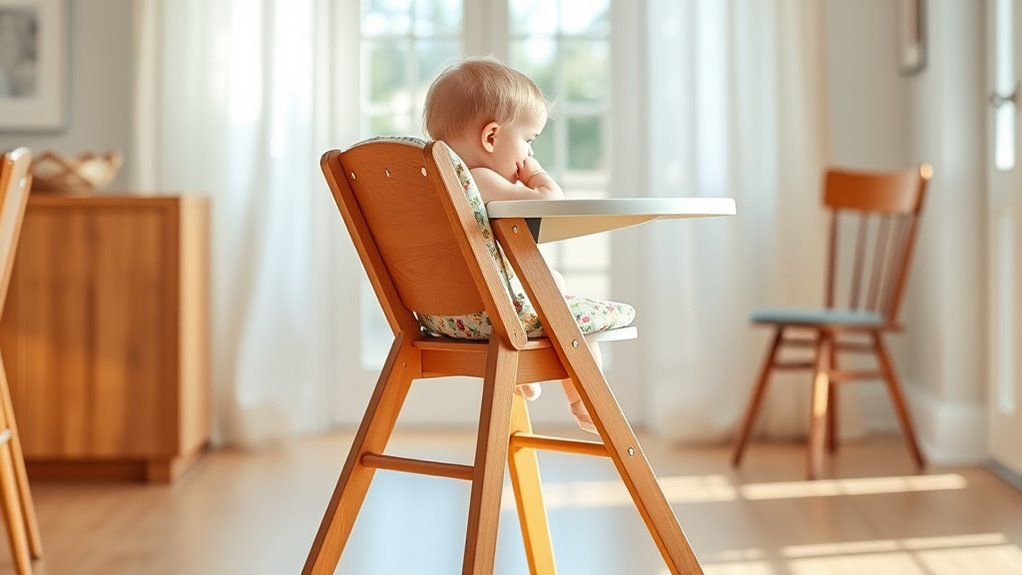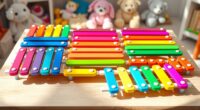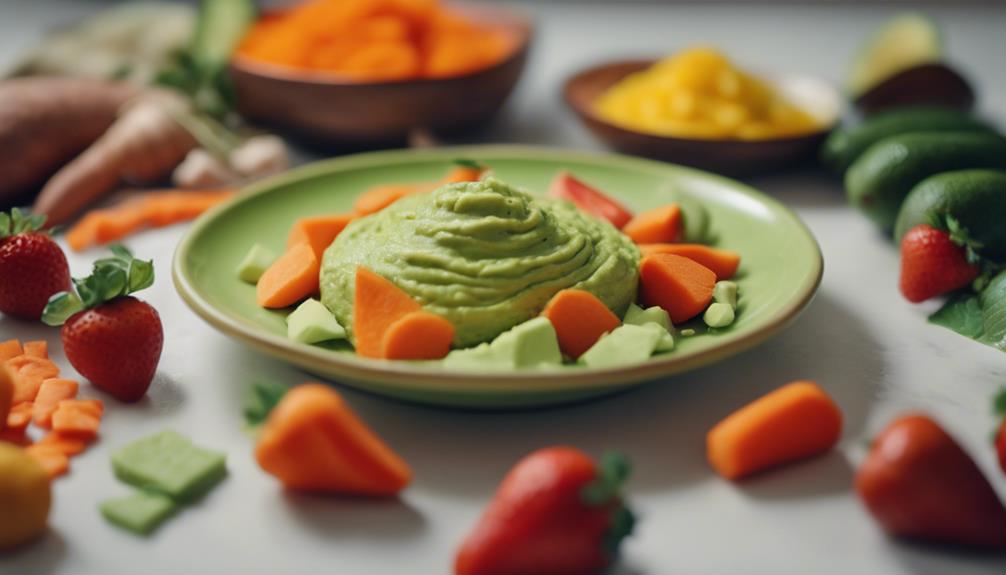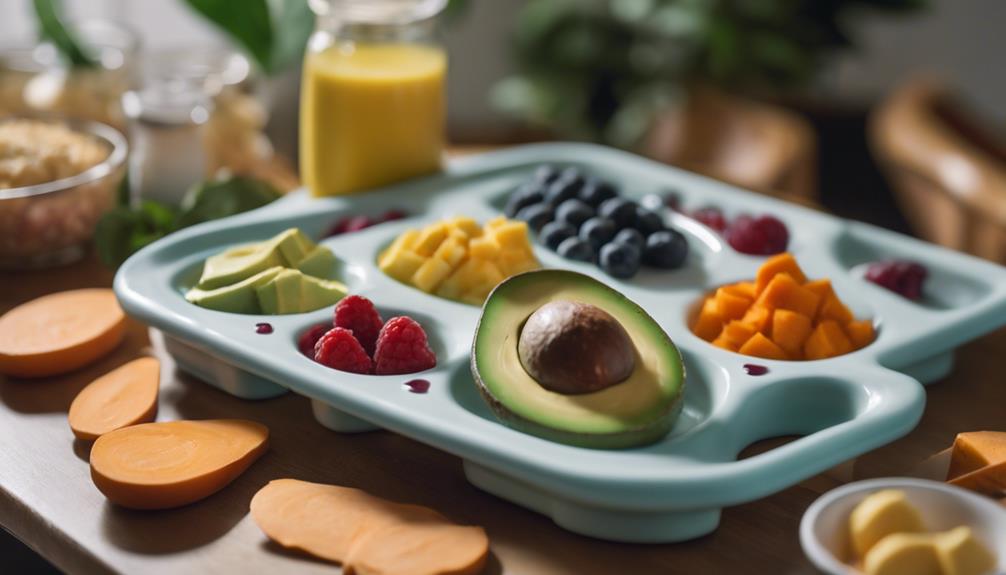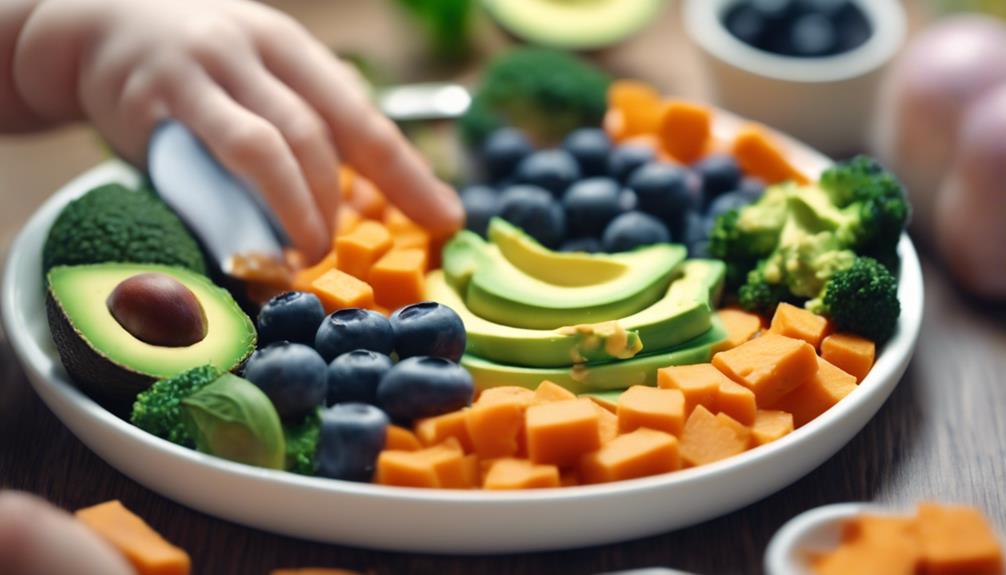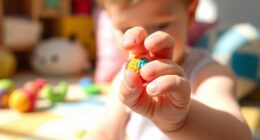To make feeding easier and safer, guarantee your child’s high chair is stable with all four legs firmly on the floor. Adjust the tray close to their chest so it prevents slipping, and secure it properly before use. Keep straps snug but comfy, and regularly check for wear or slack. Stay attentive and supervise your child throughout mealtime. For more practical positioning tips that promote safety and ease, keep exploring these key setup strategies.
Key Takeaways
- Position the tray close to the child’s chest to prevent slipping and encourage proper feeding posture.
- Adjust the tray height to align with the child’s waist or chest for comfort and safety.
- Ensure the high chair is stable with all four legs firmly on the ground before use.
- Keep straps snug but comfortable to secure the child without restricting movement.
- Supervise continuously, staying within arm’s reach to monitor and assist during feeding.

Ensuring your child’s safety while using a high chair begins with proper setup and diligent supervision. The first step is to ensure that the high chair is sturdy and stable on the floor, with all four legs firmly planted. This stability prevents tipping and gives you peace of mind during mealtime. Once the chair is secure, focus on the strap comfort. The harness should fit snugly around your child without causing discomfort or restricting movement. A well-fitted harness keeps your little one securely seated, preventing accidental falls or slips. Always check that the straps are correctly positioned—shoulder straps should rest comfortably on your child’s shoulders, and the waist straps should be snug but not tight. Regularly inspect the straps for signs of wear or damage, replacing them if necessary to maintain safety.
Tray adjustments play a pivotal role in both safety and ease of feeding. The tray should be positioned close to your child’s chest to prevent slipping or leaning forward, which can compromise safety. Most high chairs offer adjustable trays; always set it at the appropriate height so your child’s elbows are comfortably at the table level. This not only helps your child sit upright but also makes feeding easier for both of you. When adjusting the tray, ensure it clicks securely into place and doesn’t wobble or slide. An improperly secured tray can cause your child to lean or slip, increasing the risk of accidents. Additionally, check that the tray’s edges are smooth and free of sharp corners to avoid scratches or injuries during mealtime. Regularly cleaning the straps and tray prevents buildup of food or sticky residues, which can compromise both safety and hygiene.
Supervision remains key, even when everything appears set up correctly. Never leave your child unattended in the high chair, especially if they’re capable of leaning or attempting to climb out. Always stay within arm’s reach, ready to intervene if your child becomes fidgety or tries to stand. Remember, safety isn’t just about setup; it’s an ongoing process. Regularly review and adjust the straps and tray as your child grows and moves, guaranteeing a proper fit at all times. Learn about resources in your area to find additional guidance or assistance if needed. Clean the straps and tray regularly to prevent buildup of food or sticky residues, which can compromise both safety and hygiene. By taking time to get the straps comfortable and the tray properly adjusted, you make mealtime safer and more manageable for everyone involved. Proper setup and vigilant supervision turn high chair time into a safe, comfortable, and stress-free experience for your child.
Frequently Asked Questions
How Do I Choose the Safest High Chair for My Child?
When choosing the safest high chair, you should focus on sturdy high chair materials like metal or durable plastic to guarantee stability. Look for adjustable features like a recline, footrest, and tray height to fit your child’s size and comfort. Avoid chairs with loose straps or sharp edges. By selecting a model with strong materials and flexible adjustments, you ensure your child’s safety and make feeding easier for you.
What Are Signs My Child’s High Chair Isn’t Secure?
Imagine your child’s high chair wobbling like a boat in choppy water—that’s a sign it’s not secure. Check the high chair stability; if it tips easily or rocks side to side, it’s unsafe. Make certain safety harnesses are snug and functioning properly, preventing your little one from slipping or slipping out. If the straps are loose or damaged, or if the frame feels unstable, it’s time to tighten or replace the chair for peace of mind.
How Often Should I Inspect the High Chair for Safety?
You should perform a safety inspection of your child’s high chair regularly to guarantee it’s secure. Aim for daily maintenance checks to catch any loose parts or damages early. In addition, conduct a thorough safety inspection at least once a week, especially before feeding times. This routine helps prevent accidents and keeps your little one safe during meals, giving you peace of mind and making feeding easier and worry-free.
Can High Chairs Be Used for Children Over a Certain Age?
You might wonder if high chairs are suitable for older children. Generally, age limits and weight restrictions are key. Most high chairs are designed for children up to around 3 years old or a specific weight limit, often 40 pounds. Beyond that, it’s best to switch to a booster seat or regular chair with proper safety features. Always check the manufacturer’s guidelines to guarantee safety for your growing child.
Are There Recommended Accessories to Improve Safety and Comfort?
Imagine you’re stepping into the future—high chair accessories and safety gear can make feeding safer and more comfortable. You should consider adding a harness or strap system for stability, a cushioned seat for comfort, and a tray for easy cleanup. These accessories help prevent falls and discomfort, ensuring your child remains secure during meals. Always choose high-quality safety gear that fits well and is easy to clean for peace of mind.
Conclusion
By ensuring your high chair is properly set up and safe, you create a secure feeding environment for your little one. Did you know that nearly 60% of injuries related to high chairs happen because of falls or tip-overs? Staying alert and following safety tips can markedly reduce these risks. Remember, a well-positioned and stable high chair not only keeps your child safe but also makes mealtime smoother and more enjoyable for both of you.

